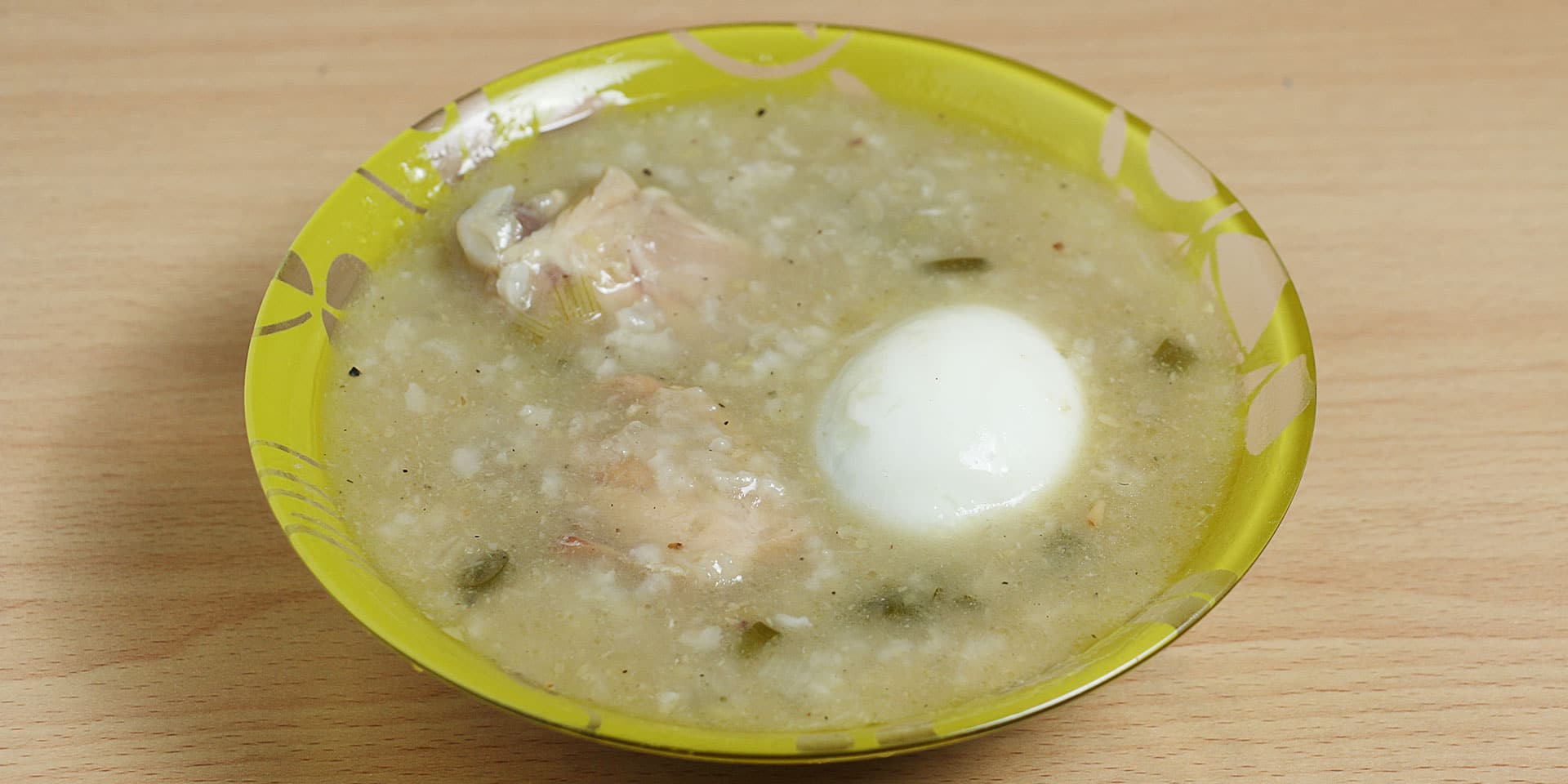Mention the word “eggs” and Filipino cuisine in the same sentence, and more than likely someone will refer to balut, a developing bird embryo that’s a local specialty.
The humble egg is in fact used in a lot of Filipino food—and often in very inventive and delicious ways.
Here are seven that we’ve come across…
Cassava Cake
This delicious cake can be found in just about any mall or market in the Philippines. Cassava trees grow all over the country, which perhaps explains its popularity.
It has a soft and spongy texture, flavored with coconut and condensed milk, and is topped with a creamy custard sauce.
“Upon touchdown at Ninoy Aquino International Airport whenever I return home to Manila, there is one dessert I instantly dream of and crave—cassava cake,” says Raines, who uses four eggs in her version.
“My taste buds instantly dance with joy with each bite of this favorite Filipino delicacy.”
Salted Duck Eggs and Tomato Salad
This is a type of side salad, and possibly the most popular side dish in the Philippines. It accompanies fried and grilled dishes, and is eaten together with rice. It’s also eaten at breakfast.
Arroz Caldo con Pollo y Huevos Duros

A type of congee that closely resembles risotto, arroz caldo literally means “warm rice” and this version features chicken and hard-boiled eggs.
Although this dish is of Chinese origin, its name was actually given by Spaniards because of pronunciation issues.
It’s usually served for breakfast because it’s filling enough to hold you over until lunchtime.
Top with garnishes such as scallions, turmeric and toasted garlic.
Embutido
A Filipino-style meatloaf, embutido is a log of ground beef with a hard-boiled-egg center. It’s a combination of sweet and savory.
“Growing up I remember my mom making batches of them for special occasions, or sometimes just making a few ahead of time,” Grace Clerc says.
“Traditionally, she made the meatloaf by wrapping each loaf in foil and steaming them.”
Tortang Talong
The humble eggplant is perhaps best known for its use in Italian cooking.
“In the Philippines we grow them a lot so they are pretty popular, especially for breakfast,” Abigail Raines explains.
“We pre-cook the eggplant and then sort of mash it, add some eggs and voila—yummy eggplant omelet.”
Turn it up a notch by adding some meat.
Kwek Kwek
A famous Filipino street food that’s made from battered and deep-fried hard-boiled quail eggs, and served with dips like spiced vinegar or sweet gravy sauce.
Kwek Kwek is commonly seen on the streets of Manila where it’s sold together with its bigger cousins: tokneneng, fish balls and kikiam.
Egg Pie
This popular Filipino bakery item is made out of egg custard baked on top of pastry dough.
It’s similar to the Portuguese egg tart but prepared as a large pie and served in slices.
The top is quite different from usual egg tarts due to its preparation, with egg whites beaten until they form into stiff peaks and then folded with the rest of the mixture—this process makes the foam rise to the top during the baking process, yielding a fluffy brown top.
Who are the Cooks?
Raymund Macaalay is a Filipino living in New Zealand. IT professional by trade, he practices his traditional family recipes in his spare time. “I have been cooking since I was 7 years old, and since then almost every day I prepare our dinner and weekend meals,” Macaalay says. His tasty recipes are on his blog Ang Sarap (Tagalog for “It’s delicious”).
Grace Clerc set up The Cooking Apprentice in 2010, motivated by her eldest son’s knack for baking. Today, along with her husband, two sons, two dogs and seven hens, Clerc advocates sustainable cooking, leading an agrarian, sustainable and homesteading lifestyle.
Abigail Raines is a lawyer turned stay-at-home mom who left the Philippines for the US in 2004. She shares her tried-and-tested home-style dishes on Manila Spoon, with recipes that reflect her family’s multicultural background and their many travels abroad.



